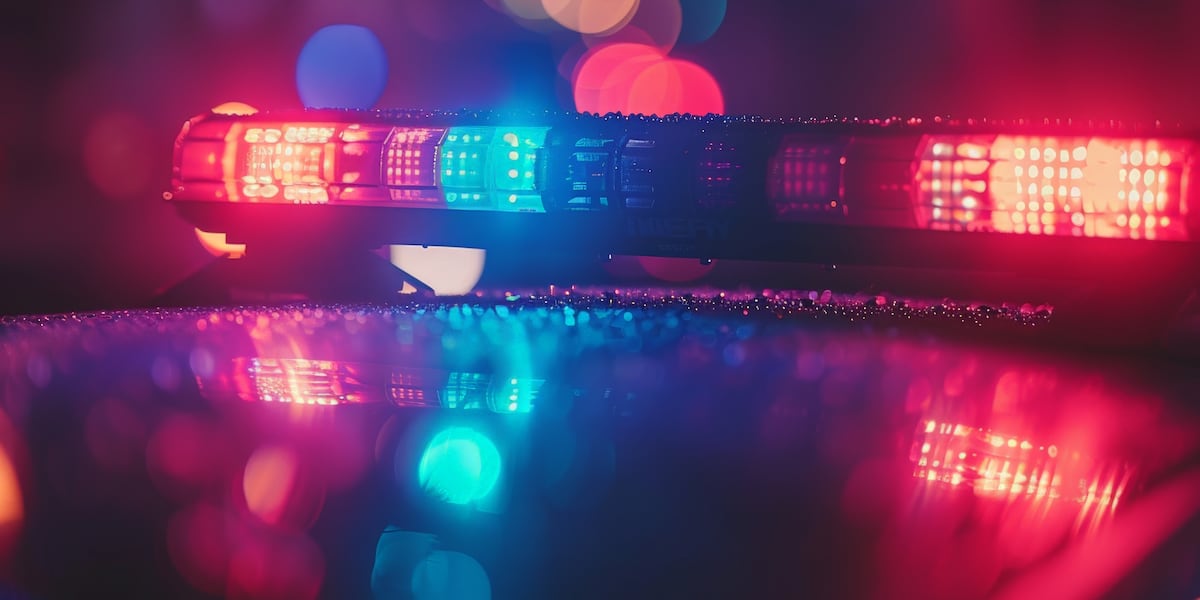Alaska
3 dead, 2 missing after family fishing trip in Alaska becomes a nightmare

JUNEAU, Alaska (AP) — An Alaska fishing adventure became a nightmare for a family of eight when disaster struck one of the two boats they chartered over the Memorial Day weekend, leaving three people dead and two more missing despite a desperate search over hundreds of square miles of ocean.
The tragedy tore the Tyau family apart: Two sisters and one of their husbands are dead, while the other’s partner and the boat captain remain missing off southeast Alaska four days after the boat was found partially submerged off an island.
Authorities suspended a more than 20-hour search covering 825 square miles (2,100 square kilometers) on Monday and have no plans to resume it.
The women’s parents, older brother and sister-in-law were on the other charter boat as part of a three-day trip to a destination fishery known for king salmon and groundfish.
The sisters and their sister-in-law didn’t like fishing but joined the vacation to spend more time with a family that was usually split between Hawaii and Los Angeles.
“It was just supposed to be a simple family get-together for eight of us, since we haven’t been together in the same spot for so long,” Michael Tyau, the older brother, told The Associated Press on Thursday. “For it to turn out like this is really devastating.”
The Tyau siblings — Michael, Brandi and Danielle — grew up fishing in Hawaii with their parents. Michael Tyau said his sisters hated being cold and wet but would endure it for their water-loving parents and later their partners.
Brandi Tyau’s longtime partner, Robert Solis — a Navy diver-turned-private investigator who was stationed in Hawaii when they met decades ago — was someone for whom “ the ocean really was his life,” one of Solis’ brothers said.
So when the Tyau siblings’ mother suggested a family trip last year, a fishing vacation in the Sitka Sound won out.
“My sisters, I think, reluctantly agreed,” Michael Tyau said.
He and his wife flew from Los Angeles to Alaska on Thursday with Brandi Tyau, 56, and Solis, 61. They met up with their parents, sister Danielle Agcaoili, 53, and her husband, 57-year-old Maury Agcaoili, all Hawaii residents.
The whole family stayed in a lodge owned by charter boat company Kingfisher Charters in Sitka. The small port city with a backdrop of a stunning volcanic mountain is located on the shore of Baranof Island, which is part of a cluster of islands dripping off Alaska’s southeast coastline.
The area is a “premier fishing destination” for tourists because the many bays and passageways created by the islands provide protection from the wind and waves on days when the open sea is too rough, Kingfisher Charters says on its website.
Forrest Braden, executive director of the Southeast Alaska Guides Organization, said anglers often stay for multiple days on trips to the region.
“It’s more of a fishing-themed trip for a lot of people, rather than being one of a variety of activities that they do,” he said.
The boats the Tyau clan chartered, named the Pockets and the Awakin, set out Friday amid rough conditions. Michael Tyau said his sisters and wife spent the day’s voyage seasick in the two boats’ cabins and skipped Saturday’s trip to recover on land.
When Sunday dawned, their last vacation day before Monday flights home, the women rejoined the boats.
Danielle Agcaoili said “she didn’t want to let anybody down,” Michael Tyau recalled through tears.
The boat captains opted for different fishing spots. Aboard the Pockets, Michael Tyau said he “in no way felt in jeopardy, like this wasn’t safe for us to fish in.”
The Pockets returned to the lodge Sunday evening, but the family began worrying when Brandi Tyau, Danielle Agcaoili, Maury Agcaoili and Solis didn’t respond to text messages and never arrived for dinner.
The Awakin hadn’t come back, the charter company told Michael Tyau, and they lost radio contact with the captain, 32-year-old Morgan Robidou.
What happened aboard the Awakin on Sunday remains unclear. Efforts to recover the 30-foot (9-meter) aluminum vessel have been hampered by rough seas and strong winds.
The bodies of Brandi Tyau and Danielle Agcaoili were found inside the cabin. Maury Agcaoili’s body was discovered near the boat. Solis and Robidou were still considered missing Thursday.
The boat was last seen Sunday afternoon near Sitka, authorities said, but around 7 p.m. Sunday was found partially submerged off Low Island, about 10 miles (16 kilometers) west of Sitka.
Coast Guard investigators are working to determine the timeline and cause of the incident. The area was experiencing 6-foot to 11-foot (1.8- to 3.35-meter) waves, a Coast Guard spokesperson said.
Kingfisher Charters declined to respond to questions outside a statement released Wednesday saying the company is “devastated by the loss of the guests and captain of the Awakin” and is fully cooperating with an investigation it hopes “furnishes answers to the questions as to how it occurred.”
For the Tyau family, it’s too late. The deaths of Brandi Tyau, the reserved middle child who was a calming influence on Solis, and Danielle Agcaoili, the happy-go-lucky baby of the family who was often called “Dani,” has been devastating.
Brandi Tyau and Solis leave behind one son together, as well as Solis’ three sons from a previous relationship. The Agcaoilis have two children, one of whom just graduated from high school.
The family’s vacation was meant for them to enjoy a holiday weekend away and bridge the gap between their homes in Hawaii and Los Angeles.
“I don’t think all eight of us have been together in over 10 years,” Michael Tyau said.
Now, only four are left.
___
Dazio reported from Los Angeles. Associated Press News Researcher Randy Herschaft in New York contributed.

Alaska
Ted Stevens Anchorage International Airport busy with holiday travelers

ANCHORAGE, Alaska (KTUU) -Many of the people arriving to and departing from Ted Stevens Anchorage International Airport Sunday agreed that Anchorage’s main airport isn’t as tough to navigate as most right now.
On Dec. 22, three days out from both Hanukkah and Christmas, travelers at the airport were lined up, checking in, waiting for baggage, or going through security; all of those, demanding a wait. However, several travelers told Alaska’s News Source about their experiences and what they were expecting during their flights.
Matt Howard departed from Raleigh-Durham International Airport in North Carolina around 5 a.m. “It was the busiest I’ve ever seen it,” Howard said. He estimated he touched down in Anchorage around 6 p.m., adding Ted Stevens was much “less frantic” than the other airports he was at, but thought the evening time frame might have been a contributing factor.
Flying in from Hartsfield-Jackson International Airport in Atlanta, Georgia, Kimberly Lamar said she visits her mother in Alaska at least once a year.
“It was pretty overwhelming, trying to get through from Atlanta,” she said. “Then I got to Seattle; it was hard to get through to the gates of Seattle. And finally, this is the easiest airport I’ve actually been in all day.”
Born and raised in Alaska, Gideon Mahoney was traveling to Colorado where he recently relocated. “I’m actually really surprised, right now it’s easy and we were a little late, so…” Mahoney said, glancing at the line for security.
Growing up in Alaska, Mahoney said flying into Denver International Airport can be overwhelming at times.
“We’re working on figuring out how to deal with that,” he said. “We’re getting it.”
As for travelers who haven’t left just yet, Lamar’s advice was aligned with a prepared statement from Alaska Airlines: both said arriving early is the key for holiday travels.
“If you’re flying, make sure you leave early because those lines are crucial,” Lamar said.
See a spelling or grammar error? Report it to web@ktuu.com
Copyright 2024 KTUU. All rights reserved.
Alaska
Hydroponics provide year-round growing for Alaska farmers

On a recent December afternoon, Soldotna farmer Taylor Lewis preps for a day of harvesting crops. She walks to a tray filled with ripe lettuce and snips a head of it by the stem.
It’s just one of about 900 plants that Taylor and her mother-in-law Jayme Lewis will harvest and process this week – despite freezing temperatures and slushy snow outside. That’s because the duo works for Edgy Veggie, an indoor farm that grows produce year round.
“In the summer, a lot of our business drops off because folks are gardening at home. But in the winter, they’re not, because it costs money to heat your greenhouse,” Jayme said. “It costs a lot of money to heat your greenhouse.”
The company is a hydroponic farm, meaning they grow plants without soil. Hydroponic systems recycle and reuse nutrient-filled water, which minimizes waste. Specially made lighting and climate controlled conditions make it possible for Edgy Veggie to grow indoors during the winter months.
Around Thanksgiving, the company harvested 150 pounds of lettuce, enough to make about 800 salads. That took two days and was one of their biggest hauls of the year. Although not a typical harvest for the company, Jayme says she does see an uptick in business during the winter when Alaska’s produce is almost exclusively shipped up from the Lower 48.
“If you go to the grocery store and pick up a head of lettuce right now, by the time you get it home it will be wilted,” Jayme said. “That’s sad. Literally, that’s sad.”
Jayme says some local restaurants have sourced their vegetables from Edgy Veggie because they last longer and are fresher than grocery store produce.
Nestled between two train cars-turned-restaurants on the other side of town, Henry Krull walks inside his shipping container farm. He points to a wall that’s growing hundreds of bunches of butter lettuce.
Krull is the owner of fresh365, another Kenai Peninsula based hydroponic farm. Just like Edgy Veggie, the farm operates entirely indoors.
“The advantage of growing indoors, in a container like we have, is that we can control the environment,” Krull said. “We can grow no matter what’s going on outside. It can be 30 below outside, but it’s always 70 degrees or so inside.”
fresh365 also sees an uptick in direct-to-consumer sales in the winter. Otherwise, most of their sales go to other businesses, like local restaurants.

And while indoor farming means fresh, local produce year-round for Alaskans, it faces a number of challenges. Krull says growing in a hydroponic setting is much more expensive than traditional farming methods. So, to offset his farm’s energy costs, he installed solar panels, which were partially funded by the U.S. Department of Agriculture’s Rural Energy for America Program, or REAP.
But, Krull says the property doesn’t get much sunlight in the winter.
“The sun is a very valuable commodity, it’s valuable for not only producing electricity, but it helps to lower the energy costs,” he said. “And the energy costs of the farm containers we have is actually very, very high, because we can’t take advantage of the sun.”
Edgy Veggie, on the other hand, doesn’t even have solar panels. Jayme says their energy costs are high year round.
“Electricity, especially, is outrageous,” she said. “I wish that the state had some sort of option with the electric companies to help support farming. We’re providing a service to the community, honestly. We’re trying to, but it might run us out of business.”
Other challenges to hydroponics include faulty pumps and timers, ventilation issues and water leaks. Like traditional farming, hydroponic farmers say it’s backbreaking work.

But, for farmers like Taylor Lewis, offering fresh and local produce year round is a labor of love.
“Being able to supply our community with anything fresh is great,” Taylor said. “What we have as options in the grocery store – it’s not cutting it.”
“These belong in every community,” Krull said. “We’ve been able to prove that as a business model, it works. You can make a profit doing it, you can provide a good service to your community, and I think we can really do good for our community by providing something that is not readily available on a year-round basis.”
According to the U.S Department of Agriculture, only 5% of food Alaskans consume is grown locally. The state also has very short growing seasons.
Alaska
Nature: Northern Lights above Alaska

Watch CBS News
Be the first to know
Get browser notifications for breaking news, live events, and exclusive reporting.
-

 Politics1 week ago
Politics1 week agoCanadian premier threatens to cut off energy imports to US if Trump imposes tariff on country
-
/cdn.vox-cdn.com/uploads/chorus_asset/file/25789444/1258459915.jpg)
/cdn.vox-cdn.com/uploads/chorus_asset/file/25789444/1258459915.jpg) Technology1 week ago
Technology1 week agoOpenAI cofounder Ilya Sutskever says the way AI is built is about to change
-

 Politics1 week ago
Politics1 week agoU.S. Supreme Court will decide if oil industry may sue to block California's zero-emissions goal
-
/cdn.vox-cdn.com/uploads/chorus_asset/file/25546252/STK169_Mark_Zuckerburg_CVIRGINIA_D.jpg)
/cdn.vox-cdn.com/uploads/chorus_asset/file/25546252/STK169_Mark_Zuckerburg_CVIRGINIA_D.jpg) Technology1 week ago
Technology1 week agoMeta asks the US government to block OpenAI’s switch to a for-profit
-

 Business1 week ago
Business1 week agoFreddie Freeman's World Series walk-off grand slam baseball sells at auction for $1.56 million
-
/cdn.vox-cdn.com/uploads/chorus_asset/file/23951353/STK043_VRG_Illo_N_Barclay_3_Meta.jpg)
/cdn.vox-cdn.com/uploads/chorus_asset/file/23951353/STK043_VRG_Illo_N_Barclay_3_Meta.jpg) Technology1 week ago
Technology1 week agoMeta’s Instagram boss: who posted something matters more in the AI age
-
News1 week ago
East’s wintry mix could make travel dicey. And yes, that was a tornado in Calif.
-
/cdn.vox-cdn.com/uploads/chorus_asset/file/24924653/236780_Google_AntiTrust_Trial_Custom_Art_CVirginia__0003_1.png)
/cdn.vox-cdn.com/uploads/chorus_asset/file/24924653/236780_Google_AntiTrust_Trial_Custom_Art_CVirginia__0003_1.png) Technology2 days ago
Technology2 days agoGoogle’s counteroffer to the government trying to break it up is unbundling Android apps
















